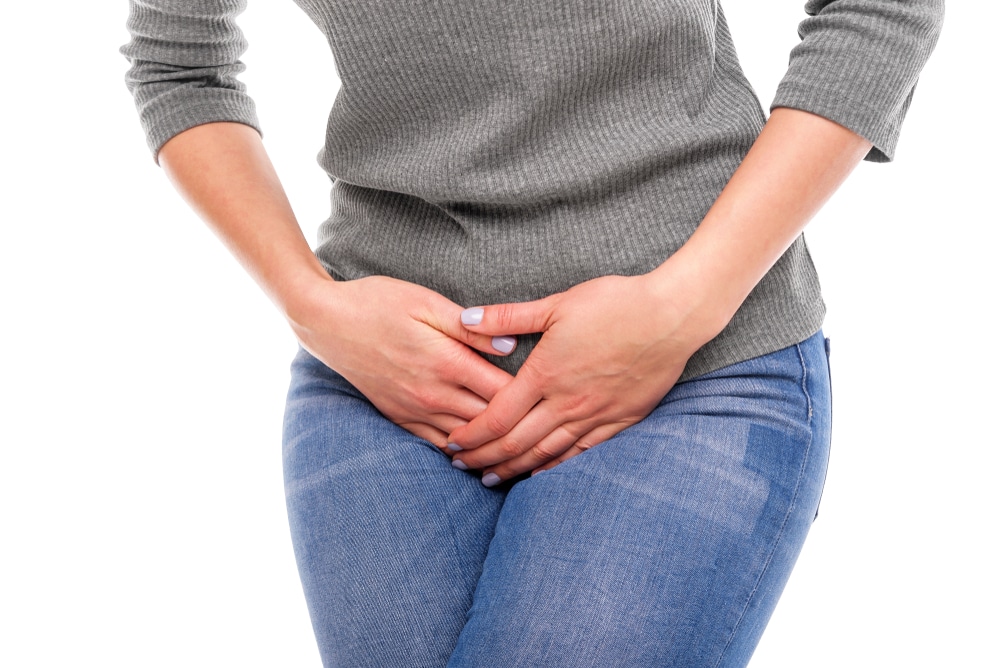On our Healthful Woman podcast, Urogynecology specialist Dr. Alan Garely explained the basics of urinary incontinence in women. In this blog, we will review a bit more about this condition, common causes, and treatment options.
What Causes Urinary Incontinence?
Urinary incontinence occurs when a woman is unable to control the flow of urine from her bladder. When a woman normally urinates, the bladder contracts and pushes urine through the urethra-but only when she wants this to happen. If weakness develops in the tissues around the bladder and urethra, this can cause urine to leak out on its own. Urinary incontinence can also happen if the bladder itself becomes very overactive.
There are different types of incontinence:
- Stress incontinence: Leakage of urine when you cough, sneeze, laugh, or exercise
- Urge incontinence: Leakage of urine as soon as you feel your bladder is full, or on your way to the bathroom (not being able to get to the bathroom on time). Women with this type of incontinence often also have an overactive bladder
- Mixed incontinence: Some women have leakage for both of the above reasons
Pregnancy and delivery, especially vaginal delivery, and increase the risk of urinary incontinence, but this can happen in women of all ages, with or without prior pregnancies.
When Should I Seek Treatment for Urinary Incontinence?
Some degree of urinary incontinence in women is relatively typical immediately after a delivery, but may improve on its own during the first few weeks. Many women have leakage of urine that is very rare and not bothersome to their day to day life. If this is the case, no evaluation may be necessary. However, if the leakage interferes with exercising, intimacy, work, or travel, and if you find that you are wearing pads regularly due to incontinence, it may be time to consider an evaluation by a gynecologist or Urogynecologist.
In addition, frequent urinary incontinence can sometimes be a sign of a different underlying medical issue, such as a bladder stone and urinary tract infection. Even if a woman does not want treatment for the incontinence, it is important to make sure that any other medical causes can be treated.
How Can I Treat Urinary Incontinence?
The treatment for urinary incontinence depends on the root cause. For women with urge incontinence, bladder training can help. Over time, patients lengthen the average amount of time between their urges to urinate, which “teaches” the bladder to hold more urine before starting to leak. Your doctor may also recommend behavioral changes, such as scheduling times to urinate and modifying your diet and fluid intake.
For stress incontinence, your gynecologist may often recommend pelvic floor muscle exercises to start, which are done with the help of a specialized physical therapist. This can lead to significant improvements in incontinence without the need for surgery and can help women who have urge incontinence as well.
If behavioral changes and physical therapy don’t work, or if the incontinence is severe, there are surgical options for the treatment of incontinence that do not require an overnight hospital stay and can be very effective. Your gynecologist may refer you to a Urogynecologist—a specialist in female urinary incontinence—to pursue these options further.
Schedule an Appointment
To schedule an appointment at Carnegie Women’s Health, call our New York, NY office at (315) 628-7063 or request an appointment online.
Source: “Urinary incontinence — diagnosis and treatment” Mayo Clinic, https://www.mayoclinic.org/diseases-conditions/urinary-incontinence/diagnosis-treatment/drc-20352814

